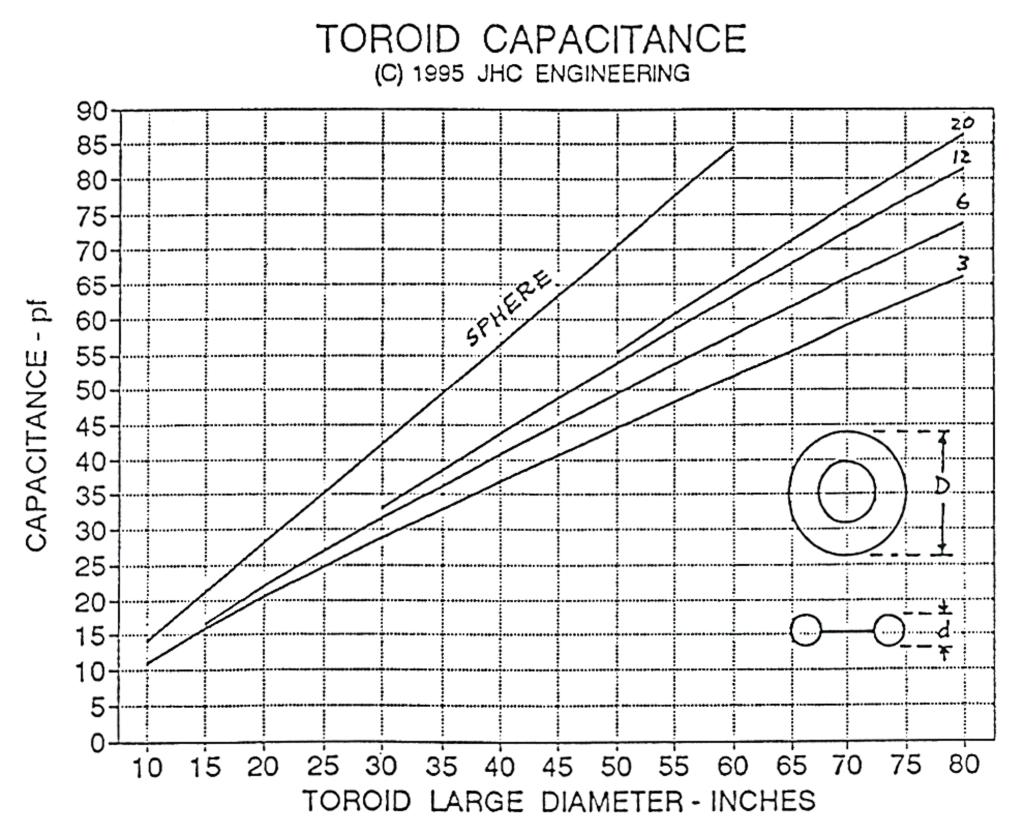TCBA Volume 16 - Issue 1
Page 15 of 18
Sphere/Toroid Capacitance
John H. Couture
The following graph shows curves for various size spheres and toroids vs capacitance. The curves are based on the equations shown in the TCBA News Vol 6 #2 page 15. Rearranging these equations to find the many possible sphere/toroid sizes when you know the capacitance is a difficult math problem. The graph makes the solution simple. It should be noted that these capacitances are also dependent on the construction and location of the terminal and on the surroundings. The capacitances shown by the graph can vary by as much as +/- 10 percent.
The graph includes spheres with diameters of 10to 60 inches and toroids with large diameters from 10 to 80 inches (x axis) and with small diameters of 3 to 20 inches. Small diameter refers to the cross section of the toroid. The left side of the graph (y axis) shows the capacitance in picofarads.
Note that the toroid capacitance is mainly dependent on the large diameter of the toroid. However, increasing the small diameter increases the capacitance slightly. That is why the separate curves are shown for the small diameters (cross sections).
Example - If you know the secondary terminal capacitance necessary to properly tune a Tesla coil, the graph will show the sphere diameter and many combinations of large and small diameters for toroids that will work. For example if you need a 40 pf terminal capacitance, you can use a 28 inch sphere or a 12 x 36, 6 x 40, 3 x 45 inch toroid, etc. Solving this type of problem mathematically would be impossible except for those well versed in mathematics. This graph will give the designer plenty of design flexibility without the burden of math calculations.

